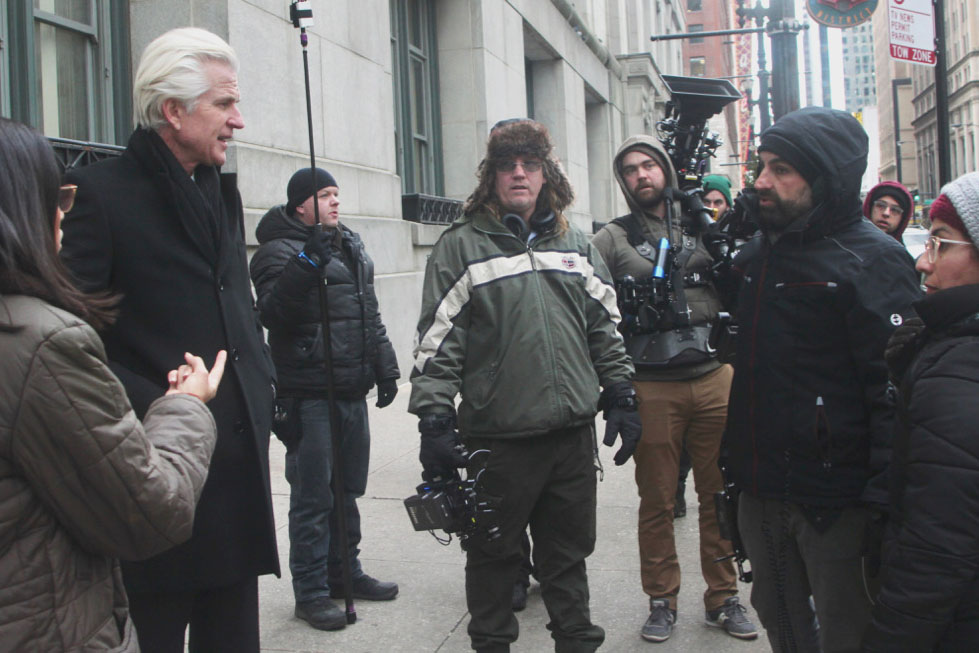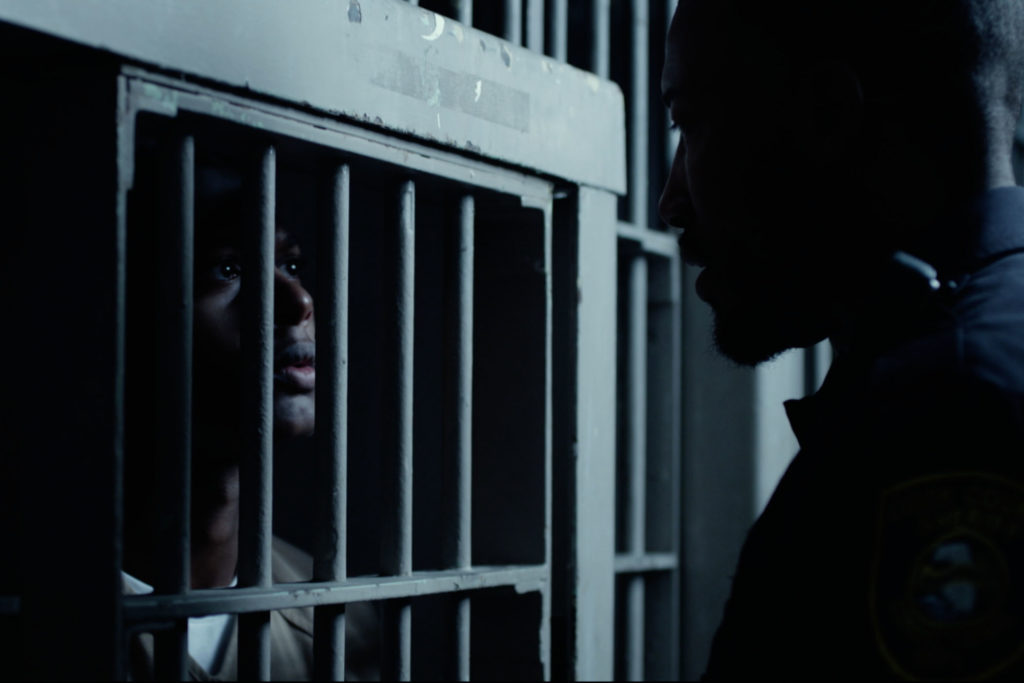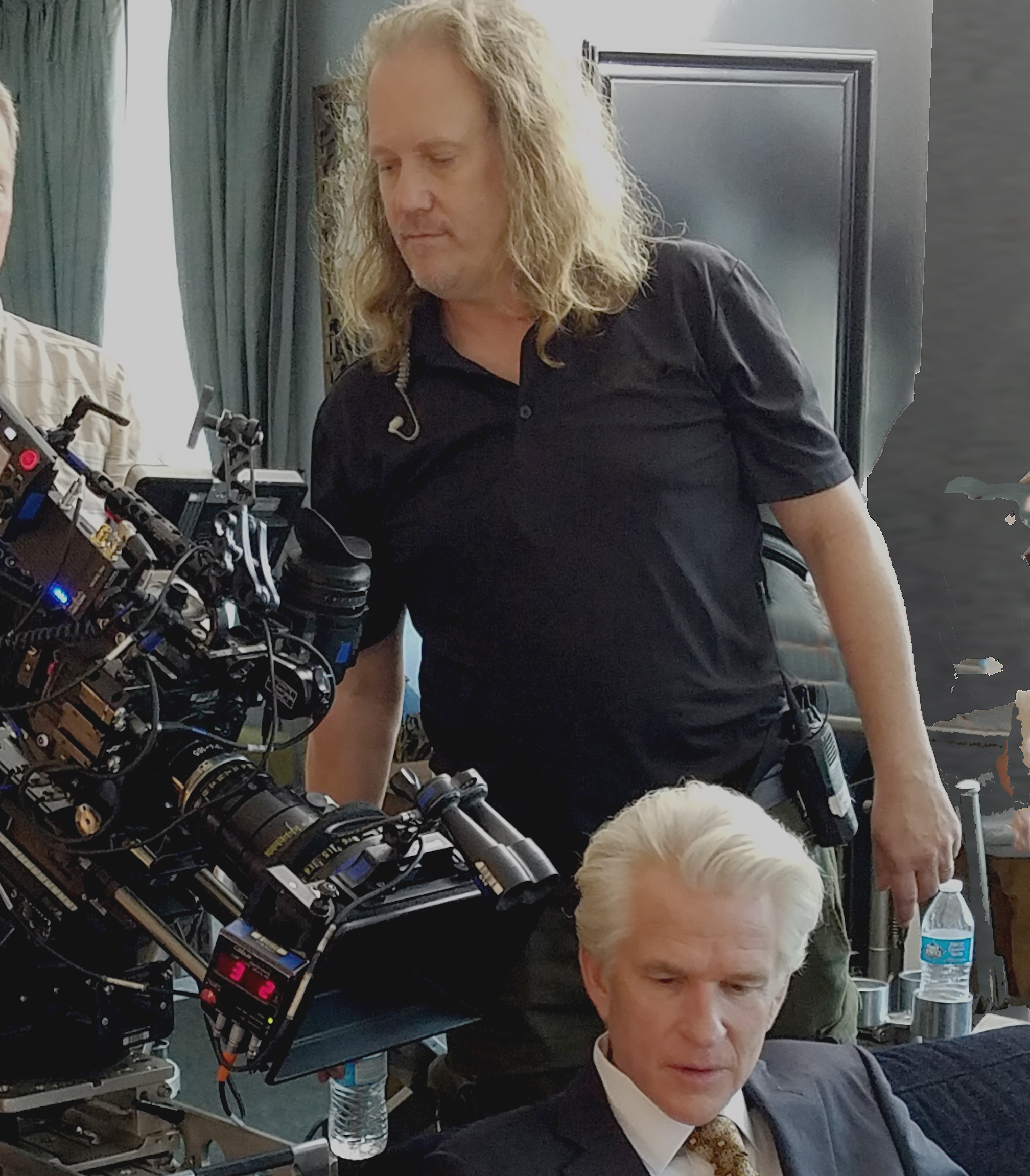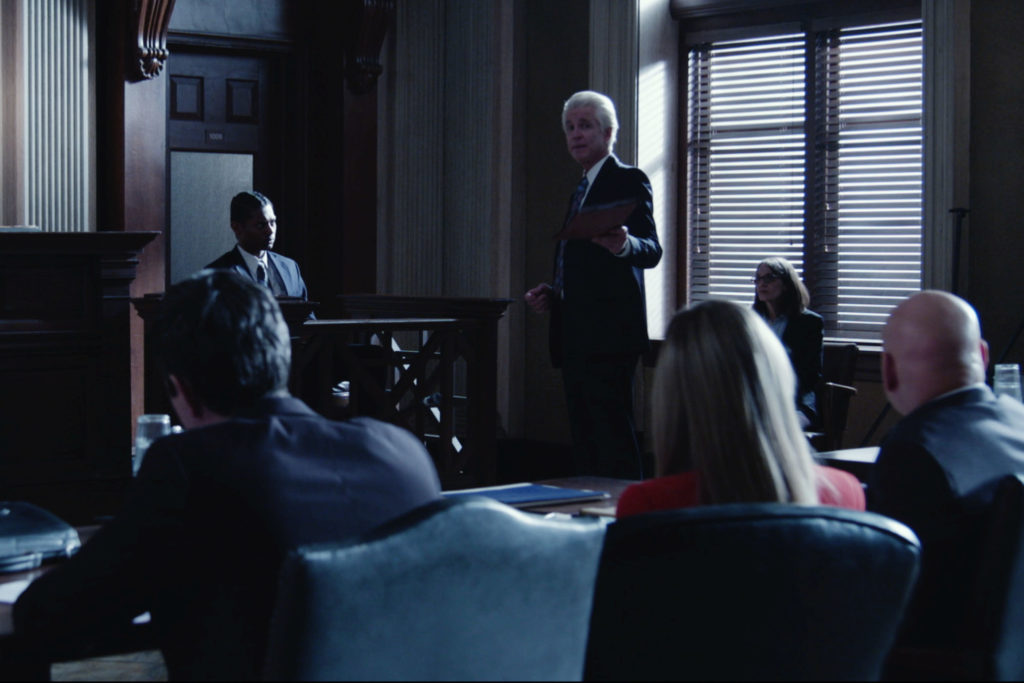September 23, 2020
6 min read
Directed by Youssef Delara from an original script by Jay Paul Deratany and Shaquille O’Neal serving as an executive producer, Foster Boy tells the story of a high-powered attorney Michael Trainer (Matthew Modine), who is forced to take on a pro bono case to represent a young man, Jamal Randolph (Shane Paul McGhie) who is suing his former foster care agency for abuse when he was growing up. The feature film drama was shot by cinematographer Ben Kufrin (The Bounce Back, Filly Brown, Adulterers, Jimmy & Judy) with VariCam Pure and AU-EVA1 cinema cameras.
Most of the film’s story is set in Chicago though some takes place in Los Angeles as well. One of Kufrin’s main challenges was a 24-day shooting schedule with only two days allotted for actual location work in Chicago and only at the end of the schedule. That meant playing a fair amount of exteriors in LA for Chicago to cut with scenes that would be later shot in Chicago. “Because location work is typically done first, it allows you to establish lighting continuity to match interiors from later, but our schedule dictated shooting on location in Chicago would have to be done last," reveals Kufrin. "I knew it would be tricky to establish lighting, but also maintaining weather continuity, as the story is set in mid-to-late November. "Our production wouldn't actually be shooting in Chicago until very late December and that was a real roll of the dice.”

(Left to right) Actor Matthew Modine, DP Ben Kufrin (center, green jacket) and director Youssef Delara (dark jacket with hood).
A big advantage was that Kufrin actually grew up and lived in Chicago before moving to Los Angeles in his early twenties. Says Kufrin, “I know Autumn in Chicago can be absolutely beautiful but can also change quickly and dramatically going from clear crisp jacket weather in the mid 50’s to a blistery cold overcast grey in the high twenties. Of course there’s always the possibility of snow."
Several story elements needed consideration for Kufrin and Delara to create a look for the film. “Shooting in 2:40 (spherically ) just seemed right for the story," explains Kufrin. "I wanted there to be a slight yellow warmth to his elite west coast lifestyle but simultaneously juxtapose the inherent sterility and empty void of any emotional human connection using symmetrical and exacting composition in a fairly static tableau perspective with limited camera movement."
The look shifts when Trainer is in Chicago and is ordered by a judge (Louis Gossett Jr. ) to take on a separate pro bono case for a young man suing his foster care agency. Trainer’s world changes completely and he finds himself in the cold, gray Chicago world of his new client Jamal, whose history of being systematically abused as a foster child is slowly revealed.
"The look we established in Chicago that felt most appropriate was a stark one that I knew well growing up there when the city is at its gloomiest and chilliest," explains Kufrin. "I knew that LA has only a few very specific areas that could play for Chicago like downtown and parts of Pasadena. I thought with the right combination of architecture, angles and proper time of day I could approach getting an effective Chicago feel, which I could also carry into the interiors.

DP Kufrin created the look by using soft reflected but directional sources with strong fall off or negative fill to create a stark foreboding sense.
"I got the look mostly by using soft reflected but very directional sources that would often half or three quarter key light the characters with strong fall off or negative fill, which helped create a stark foreboding sense as the case unfolds," he continues. "We also needed looks for flashbacks to Jamal’s abusive childhood which come out during the trial from his and others testimonies."
Foster Boy was Kufrin’s sixth collaboration with Delara, who was initially impressed by earlier test footage Kufrin captured with the VariCam LT in a dark nightclub prior to Foster Boy’s pre-production. I always liked how the Panasonic color matrix resolved reds, as well as now having a good 14-stops of dynamic range,” he explains. “We also had several VFX shots to consider so we ultimately decided it best to get the most out of the sensor and shoot V-RAW, even though it was going to require more data.”
Kufrin employed two VariCam Pure(s) as his A- and B-cameras, shooting single camera style whenever possible and the EVA1 as his C-camera, mainly for 2nd unit or traveling car shots. “Ric Griffith was the 'A' cam operator and did Steadicam," says Kufrin. "For the courtroom scenes, 'B' camera was running full time and operated by Lance Fisher with Bob Heine as the key 1st AC. I was quite fortunate to have such an excellent camera team.”
The EVA1 was also used for a night stunt sequence impressing Kufrin with how well it cut with the VariCam Pure(s) in the DI. “The only thing that was noticeable was probably the noise because the EVA1 has a sensitivity of only 2500, while the VariCam has native 5000 ISO,” he says.

DP Ben Kufrin at camera sets a shot up over actor Matthew Modine
Kufrin was generally working with the VariCam at native 800 ISO but would go to 5000 for low light scenes. Shooting a night exterior outside Cook County prison in Chicago, Kufrin used a Joker 400W that was plugged into a Putt-Putt portable generator along with the location’s sodium vapor street lamps lighting up the whole building. “As soon as we went to 5000 ISO, suddenly the building popped and it looked great,” explains Kufrin. “Even though it was still that yellow sodium vapor look, it didn’t look too murky and down in the dungeon as you would typically see at a lower ISO."
Because of a tight economic and time budget, Kufrin primarily used only two Panavision lenses with his VariCam Pure(s) - a 15 – 40mm Primo Zoom (for Steadicam work) and an a 24-275mm Primo 11:1 Zoom.
For his EVA1, he used a few Zeiss Otus primes. “I wasn’t lighting too harshly," explains Kufrin, "but a couple times I did have bright headlights and streetlights that I couldn't control and there would be some potential for flaring. I really love the way the Primos handle that. Not many lenses can resolve those hot kicks the way Panavision lenses do.”
Lighting for the courtroom on stage, Kufrin worked out with gaffer Jeremy Graham soft directional source day lighting using several diffused T-12Ks coming through frosted beveled glass windows. He also had key grip DJ Tedesco rig several rows of 6K spaceflights through full grid overheads to create a soft base. “We then rolled around with a couple 5Ks with 5’ Octoplus Chimeras for specials and closeups.

To light the courtroom scenes, Kufrin worked out with gaffer Jeremy Graham soft directional source day lighting using several diffused T-12Ks coming through frosted beveled glass windows.
“Another big challenge was shooting interiors at The Culver Hotel in Culver City, CA playing for The Allerton Hotel in Chicago where we ultimately shot exteriors," continues Kufrin. "Architecturally, it played well for the look of the Allerton, but unfortunately we only had clearance to shoot on the fourth floor,” explains Kufrin. “I had to bring only house power units since I could not cable in lights that high up or use any elevated lighting outside, but it was well worth it as we also shot in the main bar and second floor lobby. My G&E teams were top notch and I was really fortunate to have them on the crew as well."
Post was performed by Leandro Marini at Local Hero Post in Santa Monica, CA. Kufrin and Marini had collaborated on several projects and according to Kufrin, post went smoothly due to the extensive testing. Kufrin, Marini and D.I.T. Michael Blue designed four custom LUTs that were used as a baseline for dailies. Says Kufrin, “The look didn’t change much from the dailies when we got to the DI, so it was more about refining the looks and keeping them consistent. Leandro is a very talented colorist and Mike Blue kept us on track most efficiently. We did the entire DI and DCP at Local Hero, as well as the visual effects.”
Overall, Kufrin was pleased with the way the film turned out and felt the VariCam was the right tool for the job. “It’s a very powerful story and all of the performances are excellent so I was quite happy to help tell the story through the cinematography,” he says.
Check out the official trailer for Foster Boy
On September 25, Foster Boy will be released theatrically in select theaters across the country and on iTunes and other major digital streaming platforms thereafter.
For more information on the film, visit the film’s official website. You can also view its limited theatrical release schedule here.
For more info on VariCam and EVA1 cinema cameras, click through here.
![]()
